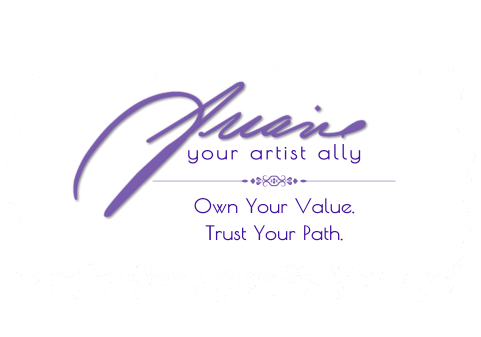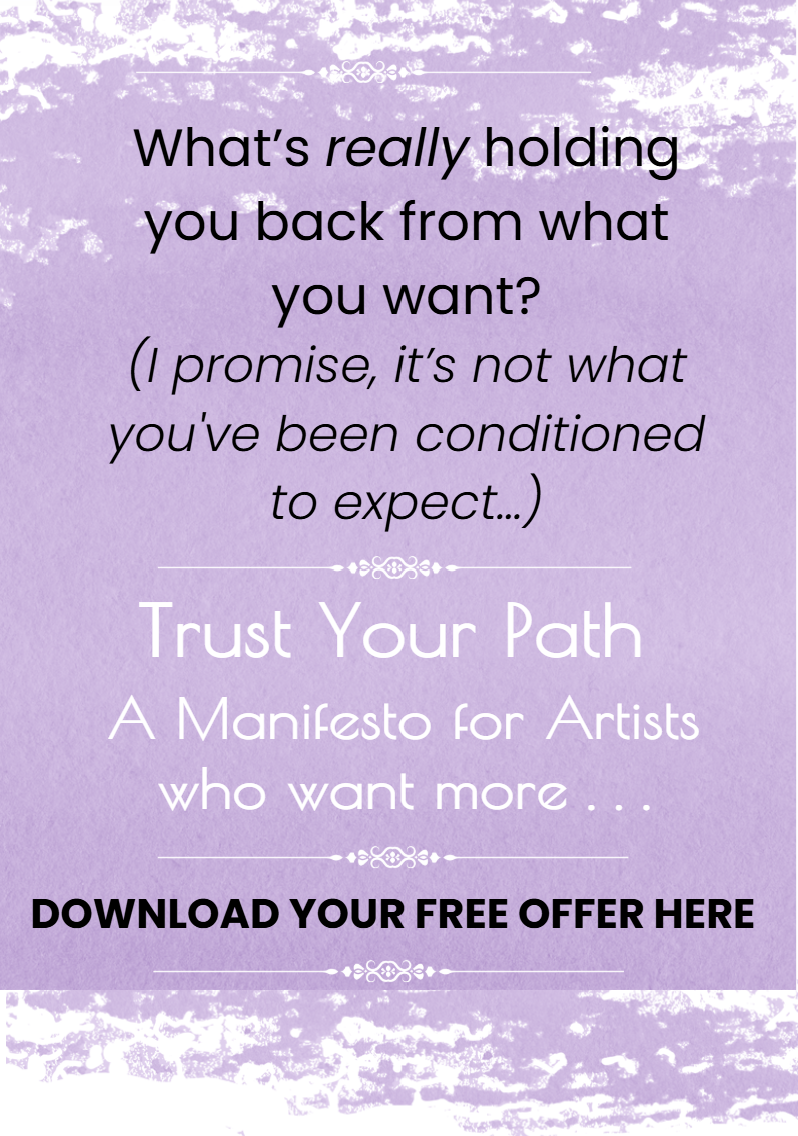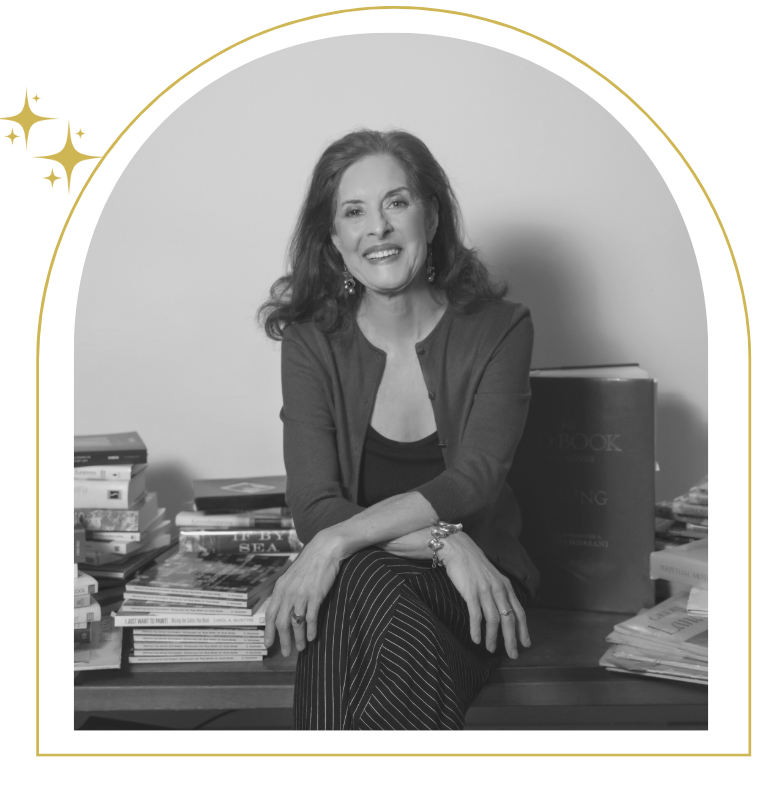Ariane Goodwin, Ph.D.
An Educator, Editor, Writer, and Art Career Coach
who believes artists change the world!
Part 1: Being Vulnerable
The very nature of an effective artist statement is all about revealing the true spirit of your work. And there’s really no way to accomplish this if you have your guard up, if you’re “armored,” as Brené Brown has pointed out in her talks on the power of vulnerability.
First, let’s dispel that clinch in our stomachs when someone asks us to be vulnerable.
As you can see, I’ve sandwiched it in-between personal and be real because I instinctively wanted to buffer a word that triggers so much anxiety for so many of us. Yes, I’m including myself.
Turns out that Merriam-Webster validates that clinching sensation.
Vulnerable
1: capable of being physically or emotionally wounded
2: open to attack or damage : assailable, vulnerable to criticism
3: liable to increased penalties, but entitled to increased bonuses after winning a game in contract bridge
Oddly enough, it’s No.3 that holds the key to the kind of vulnerability you need in your artist statement: entitled to increased bonuses (more on this in a minute).
Here’s a fourth definition, spinning out of the self-help culture, that Merriam-Webster has neglected.
Vulnerable: the willingness to be open with others.
The key to this kind of openness is paying attention to your emotional boundaries.
Our 1960s counter-culture flooded the emotional landscape with group exercises for the anything-goes self-revelations. Baring one’s soul (and deepest, darkest secrets) was thought to bring down the father-knows-best superficiality of family perfection that demanded everyone in the family be perfect.
During that time, even imperfections had to be screened for their appropriateness according to what the media censors deemed acceptable. The 1960s counter culture was determined to tear down the suffocating walls of personal, and social, superficiality that denied the messiness and zig-zag journey of being human and alive.
In those days, some boundaries were built in: you didn’t have the entire online world watching you writhe in said vulnerability, only a small roomful of willing participants.
On the other hand, there was little to no psychological awareness that self-revelation without safe boundaries could deep-dive a participant into reliving traumas that neither they, nor the group leaders were prepared for.
The current irony of our social media culture is that once again presentation perfect rules the day. Only this time, showing a hint (or more) of “openness” has become part of the perfection requirement.
I watched this in real time the other day as an artist, hawking her online workshops for other artists, used a medical condition of hers to build “connection” and “trust” with her audience. See… if I, with this debilitating condition, can do this…so can you!!
It’s powerful. And it works. The trick is understanding how to set your boundaries. And the trick to setting boundaries is being clear about your intentions.
Okay then, what’s the real intention behind revealing the true spirit of your work?
We’ve gone over this before, that your artist statement is about building a connection with your potential and active collectors that reinforces the connection they already feel from seeing your work.
Why? Because what is more organic to humans than language?
Words are our birthright, for language is as basic to the human psyche as bones are to the human body. First baby words proclaim us even before our first baby steps.
Even when people can‘t speak or hear, they will still create words out of movements, signs and symbols. Remember Helen Keller? A child without words, without language? Lost in a cave of imponderable loss until she was given one word: water.
Your artist statement has the potential to be just as powerful, just as life-affirming.
Step #1: Write out your intention for your artist statement.
Step #2: Decide to pay attention to how you are willing to be vulnerable. What about the how, why, and what you do makes you feel human? Makes you feel alive? Where does your own process touch your heart, your spirit, your soul?
When you get in touch with that, when the words come for that self-revelation, now pay attention to your personal boundary of what feels safe to reveal.
How? By paying attention to your body because it will tell you exactly where to draw the line. Even as your brain/mind wants to dominate the process, be mindful of the little movements in your body. If you’re feeling uncomfortable, a bit off-kilter, that’s probably okay. If you start to feel wary, or anxious, or disturbed, then you need to back up, reveal less, or reveal in a more circumspect way.
It’s an inner gauge somewhere in-between what feels just shy of uncomfortable (that’s okay, that’s normal when we’re revealing something real about ourselves), but not stomach-clinching anxious.
Perhaps a childhood experience underpins your work, but you’re not about to go into detail. You don’t have to. A simple:
I was quite young when I experienced that not all was right with the world. In search of peace, I found solace in the woods behind my home. Today, my photographs reflect the quiet safety I felt curled up in nature’s arms.
In this revelation, there is a willingness to be open with others, but there are no emotional red flags. The artist has been vulnerable, and rightfully resisted over sharing.
Being vulnerable is your ticket to authentic connection with your viewers. Use it sparingly, but use it.
Because (remember No.3 Merriam-Webster definition: entitled to increased bonuses), when you choose vulnerability wisely, the bonus is more connection with people who love your work, greater trust, and by extension greater credibility.
Remember, revealing the true spirit of your work…is the work,
even in challenging times,

P.S. Want the whole system? And my Holiday Bonus– 10 Tips for a Perfect Artist Statement Presentation?
Buy my book by the January 14th deadline:
Writing The Artist Statement: Revealing The True Spirit Of Your Work
Ariane Goodwin, Ph.D.
The first & only complete resource book that works for visual artists at all levels: beginning / mid-career / advanced
- Overcome writing blocks
- Avoid 7 blunders that tag you as an amateur
- Make your statement engaging and compelling
- Learn why galleries & collectors love good ones (even if you don’t)
- Use the power of sensory connection to help people remember you
- And get the Holiday Bonus: 10 Tips for a Perfect Artist Statement Presentation
Writing your statement has never been so easy! And that’s a promise…
- P.S.S. If you already have my book, but still want 10 Tips for a Perfect Artist Statement Presentation, send me an email: ariane@arianegoodwin.com
Revealing what, how and why you do your art does not dismantle either the beauty or mystery of it. Quite the opposite. Your effort to reach out invites others to participate in the mystery and to share the beauty.
—Ariane







